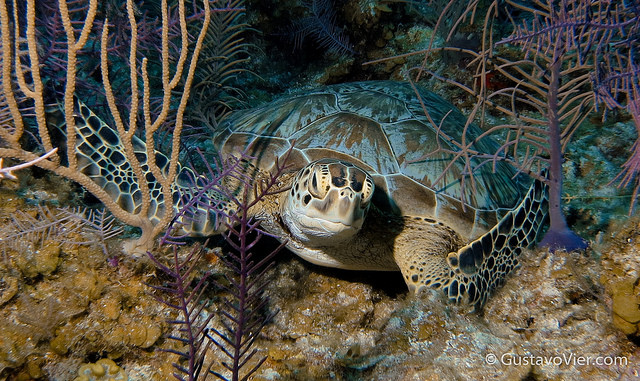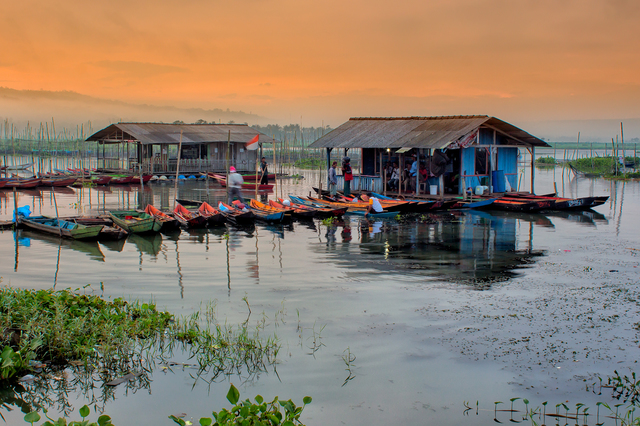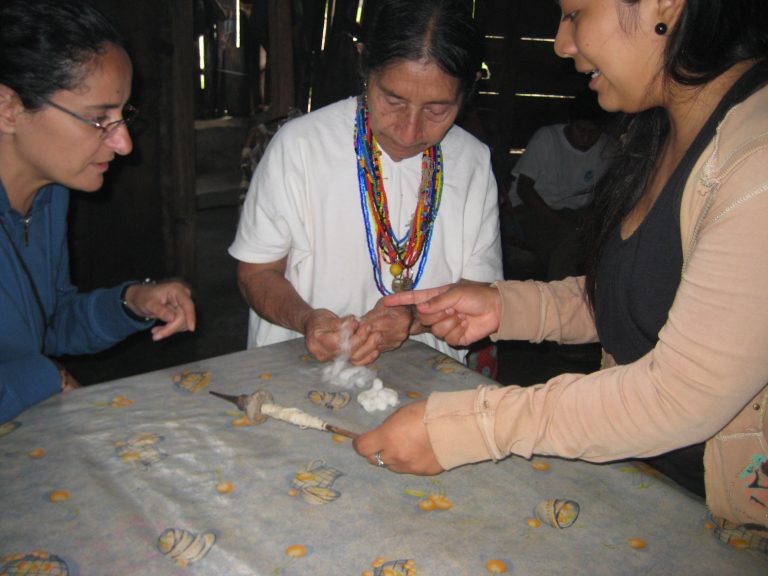A researcher at the University Institute of Tourism Research and a lecturer at the University of Alicante, Spain, Pilar Espeso-Molinero is focused on cultural heritage tourism, a key aspect of sustainable tourism. She recently completed her Phd thesis on her work with Mexico’s Lacandon, an indigenous group directly descended from the Maya, who until recently, lived in relative isolation in the forests of Chiapas. Espeso-Molinero received a fellowship to visit George Washington University, where she spent a week in November sharing her experiences with students from the International Institute of Tourism Studies, Master’s of Tourism program and the PhD program at the School of Business.
What interested you about Mexico’s indigenous Lacandon?
My work with the Lacandon grew out of a study of the potential for sustainable tourism as a tool for economic, social and cultural development. Mexico’s indigenous peoples, like many other around the world, live in extreme poverty. The Government has implemented tourism programs to solve social and economic challenges, but the approach has traditionally been very homogenous. Basically, they’ve built a model and replicated in different regions, indifferent to the unique cultural characteristics of each region or cultural group. Consequently, tourists don’t find the experiences very rewarding and have little incentive to visit more than one community. My focus has been to work with the Lacandon on developing tourism experiences that are unique to their own conditions.
More specifically, what has your approach been to helping the Lacandon develop their tourism potential?
I worked with various local entrepreneurs, employees and family members, forming a research team to design activities based on existing resources, which wouldn’t require additional funding. We focused on four distinct business units and worked with the members to decide for themselves what was particularly unique and might be of interest to visitors—more of a bottom-up than top down-approach. Development projects tend to focus on what a community lacks (education, economic resources or health); I wanted to focus on the resources it could offer (culture, traditional knowledge or values).
What types of tourist activities did you work with them to develop?
For example, we worked with one family descended from Chan K’in Viejo, who until his death in 1997 at the age of 104, was the spiritual leader of the Lacandon and who introduced many anthropologists to the ways of his people. One of Chan K’in Viejo’s sons owned a restaurant but didn’t offer any cultural activity in addition to it. So we worked with him and his family who belong to the local women’s cooperative to organize an activity where tourists would visit Chan K’in Viejo’s two widows and learn from his granddaughters about issues related to family, marriage and women’s role in the community—all in their house while learning to make corn tortillas from scratch.
What types of activities did the other communities develop?
Because I worked with each group independently, they weren’t aware of one another’s approach and all came up with very different tourist products.
For example, one group operated a small tree nursery. So they developed a reforestation project for children, who learned about the forest and were given seedlings to plant. In all cases, the creative teams formed with local Indigenous people decided to run culturally-based experiential activities. Meanwhile the government has focused on nature and adventure-type tourism, disregarding local characteristics.
Have you worked with other indigenous communities to develop their tourism potential?
I’m currently involved in conducting research with the gypsy community in Alicante, where I teach. This is more anthropological than tourism-related. We’re focused on gaining a better understanding of the gypsy’s opinion and perceptions, as they have been traditionally studied from a Western dominant paradigm. It’s essentially the first step to conducting research with minority groups.
What brought you to George Washington University?
I received my Master’s degree in tourism studies from New York University, where Dr. Hannah Messerli was teaching. She was my mentor. Even while I was in that program, I was very interested in tourism as a tool for sustainable development, which was a focus of GW’s program. When I started to investigate the possibility of the Fellowship, Hannah was still working at the World Bank and it was Seleni Matus who helped me to organize my visit. I was delighted that by the time I arrived, both were there.
What was your experience at GW like?
Great! Lots of interesting discussions and debates. I taught a class on UNESCO World Heritage sites, presented my work on the Lacandon and worked with students involved in The North Dakota Native Tourism Alliance. I also taught a class on qualitative research methods to PhD business students, who were incredibly motivated to learn about anthropology. I hadn’t anticipated that I would be in Washington DC during the election, which was not only fascinating to observe but so many of the debated issues were, in fact, relevant to my work, which is really about creating methodologies to help us better understand one another. Tourism is an opportunity for improving mutual understanding and world peace.



